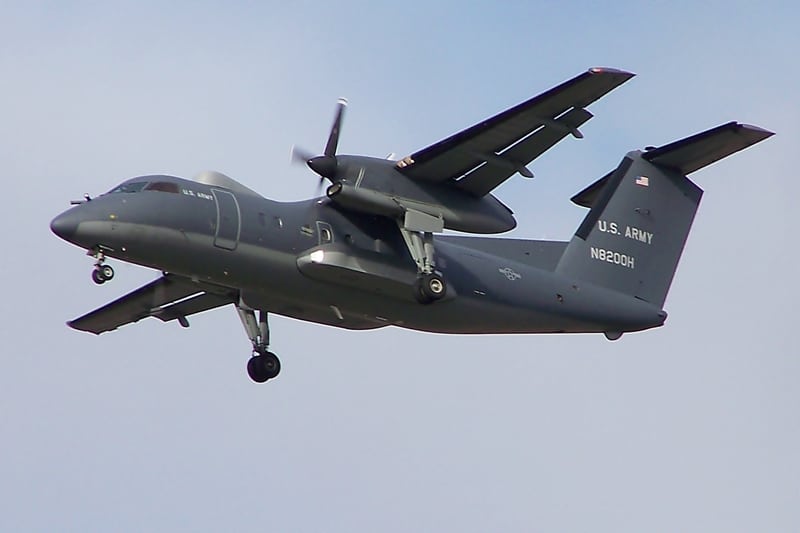
Public domain photo
The U.S. Army is expanding the capabilities of its fleet of multi-sensor reconnaissance De Havilland Canada (DHC) aircraft, with help from Leidos Group, the company said. With a contract worth a potential $64 million, Leidos is set to integrate, test and demonstrate its three completed Airborne Reconnaissance Low-Enhanced (ARL-E) systems.
The single-award, fixed-fee task order consists of a one-year base period for Leidos to integrate the first delivered mission equipment payload of the ARL-E system onto the DHC-8 aircraft, then test and deliver the completed system to the Army. If exercised, Leidos would integrate the second and third ARL-E systems onto subsequent DHC aircraft.
“Delivering additional ARL-E MEP systems to the Army recognizes Leidos’ success in developing the next generation of modular, multi-INT intelligence, surveillance and reconnaissance systems to meet evolving threat environment that the nation’s combat forces are facing,” Leidos Group President Mike Chagnon said in a statement.
The ARL-E system takes the DHC fixed-wing aircraft and modifies it with communications intelligence and imagery intelligence, ground moving target/synthetic aperture radar, and electro-optical and infrared full-motion capabilities. With the integration of the manned multi-intelligent airborne ARL-E platform, the aircraft are then deployed for all-weather condition reconnaissance mission.
The Army’s Project Manager-Sensors/Aerial Intelligence is expecting to field two of the ARL-E systems in fiscal year 2018.
This article was originally published by Defense Daily, an Avionics sister publication. It has been edited.